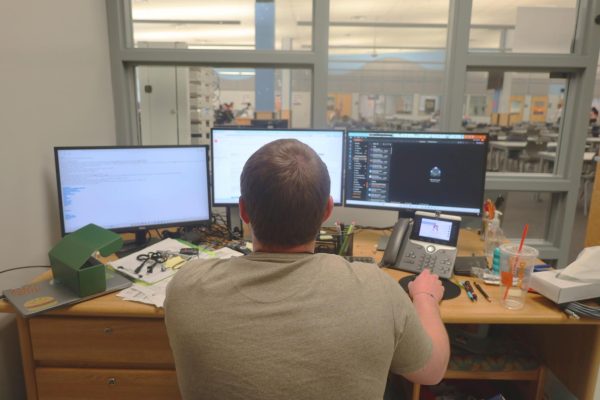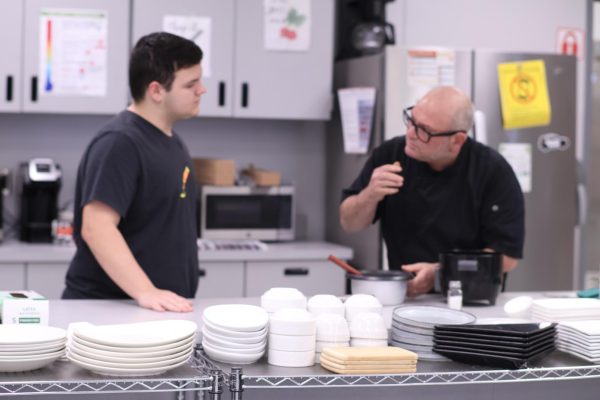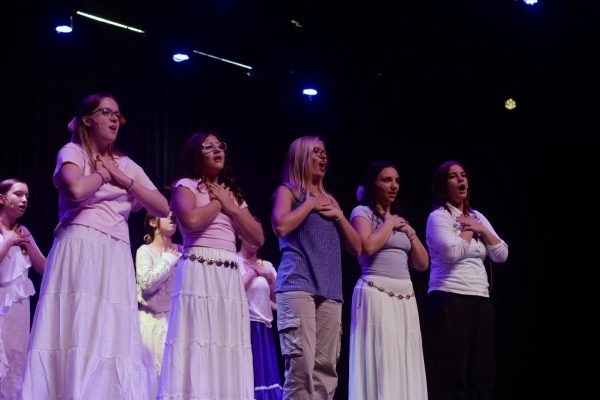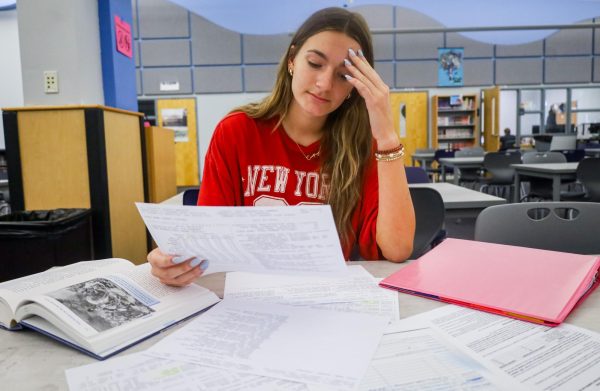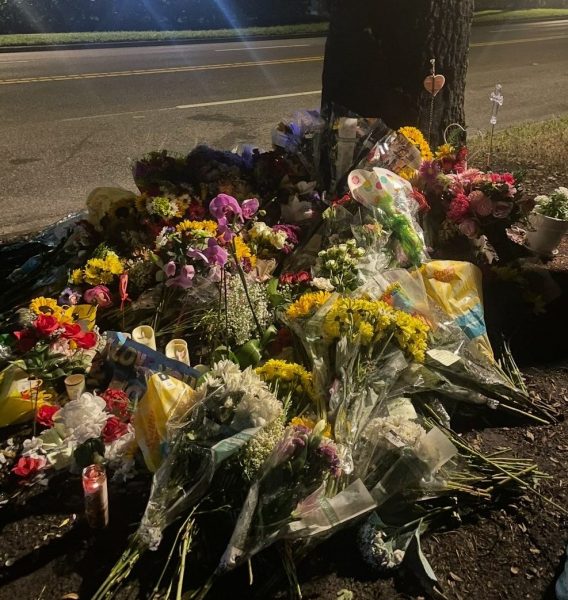Trace of concern
Contact tracing put in place after students test positive
photo by Peyton Sutch
Sophomore Leylani Neris scans back into her classroom so administration can track where she has been and what she has touched.
The person to your right has been gone all week. Your third-period teacher was teaching from home while you watched her from the classroom.
Rumors have been swirling throughout campus, making speculations as to who was the first to fall victim to COVID since the start of the school year and how they caught it. Administration has started the process of contact tracing, detecting those who have come in contact with the virus, to determine if students and staff have been exposed to the virus and need to quarantine. This procedure is difficult and requires the team to carry it out to be thorough and up to date on the latest information.
“That’s the hard part with this disease – things change daily,” principal Robert Frasca said. “I mean, even the definition of exposure has changed from one day to the next.”
The Centers For Disease Control and Prevention currently defines exposure as close contact with an individual for 15 minutes or more. This includes contact with or without a mask. To determine who has been exposed to the positive individual, school leaders look back at the student’s lunch groups, break groups, seating charts and anywhere else the student could have spent extended amounts of time with someone. From these findings, the school makes a record of who needs to quarantine. A number of students and staff have already had to go through this process.
This determination is not intended to be the final decision. Once administration creates a list of students and staff, they are required to submit it to the local Department of Health, who makes the final call on which individuals need to be quarantined. However, the Department of Health is understaffed for the crisis at hand and the school has had to directly contact the families that have to quarantine.
“Initially, I thought that the health department would be taking the lead on more of this, and that has not been the case. It’s been more us taking a lot of that responsibility,” Frasca said.
With the task of contacting parents handed down to administration, Frasca wanted to make sure that the process was conducted in a manner that would not upset the families affected.
“I was kind of nervous the first time, and every school has done it a little differently,” Frasca said. “But I know I wanted a more personal touch so we called families directly.”
Kimberly Warner, the mother of junior Jarett Warner, was recently on the other end of that phone call. Last week Jarett was asked to quarantine after coming in contact with someone who tested positive. Warner was assured by assistant principal Douglass Miller that it was only precautionary and that he could return to school after two weeks.
“He was very kind about letting us know and if we had any questions he was just a phone call away,” Warner said.
However, quarantining is not just a one-sided decision. If a parent or guardian believes their student has come in contact with someone who is infected or the student is showing symptoms of COVID-19, they are encouraged to contact the school to discuss a quarantine plan.
Once a student is quarantined they are still required to attend their classes through Connect. This has created issues for some students, including Jarrett, whose first class had to be temporarily moved to later in the day since Connect was not possible during that period.
The same protocol applies to the staff. Multiple staff members have been asked to quarantine since the start of school, including digital design and journalism teacher Brit Taylor after he had sustained contact with an home contractor who was not showing symptoms yet. Taylor was still expected to teach from home while a substitute stood in the classroom for supervision.
“Teaching virtually was rough,” Taylor said. “I need to read faces and see if people are getting what I’m saying.”
During his time Taylor struggled with sound and connection issues, which made it even harder to teach.
“It did make me appreciate the Connect students more because I felt disconnected from what was happening in class, just like what [they] say they feel most of the day,” Taylor said.
It is different for students and staff who test positive, however. Similar to quarantining, people who have the coronavirus are required to isolate. The isolation phase is a 10 day period, where the student or teacher cannot have contact with anyone, including those they share a residence with. This means if students test positive for the virus, they are out fewer days then if they were told to quarantine, which means 14 days at home. This is due to the incubation time for the virus versus the time it takes to show symptoms for the virus.
After a student quarantine or isolation is complete, they are encouraged to return back to school, wear their mask and continue to practice social distancing.
“We know that Jarrett knows what to do to stay safe, and we trust Hagerty to help keep him safe as well,” Warner said.
Your donation will support the student journalists of Hagerty High School. We are an ad-free publication, and your contribution helps us publish six issues of the BluePrint and cover our annual website hosting costs. Thank you so much!





